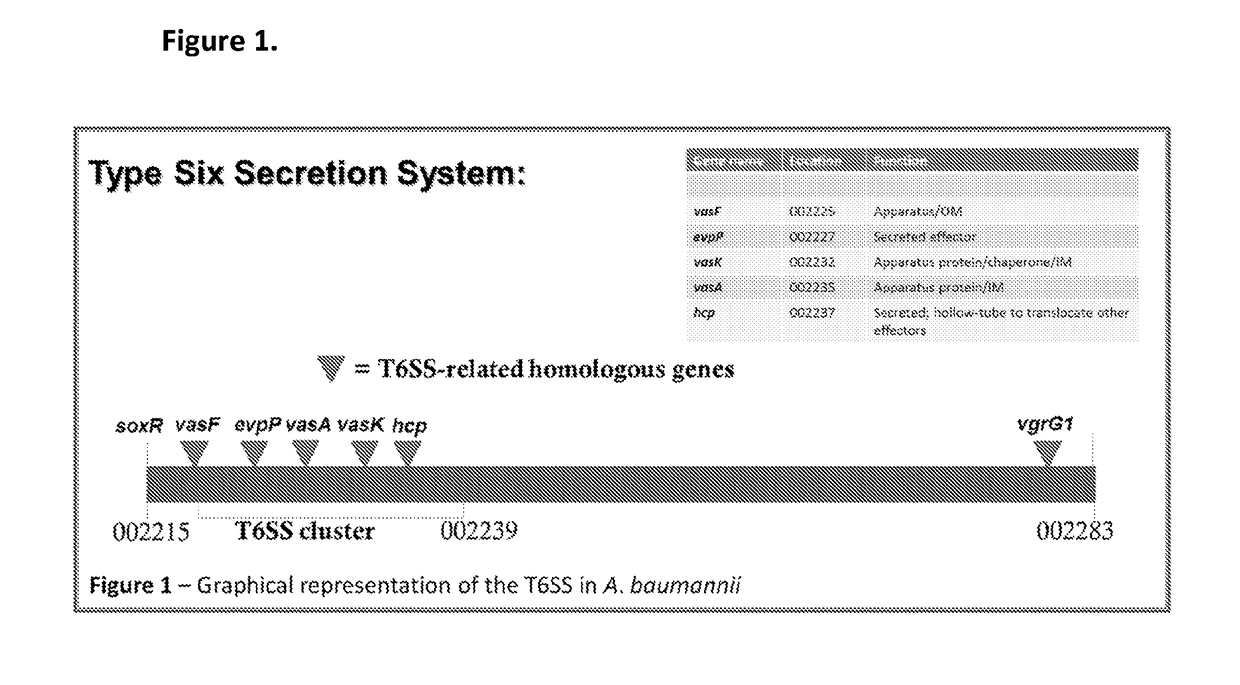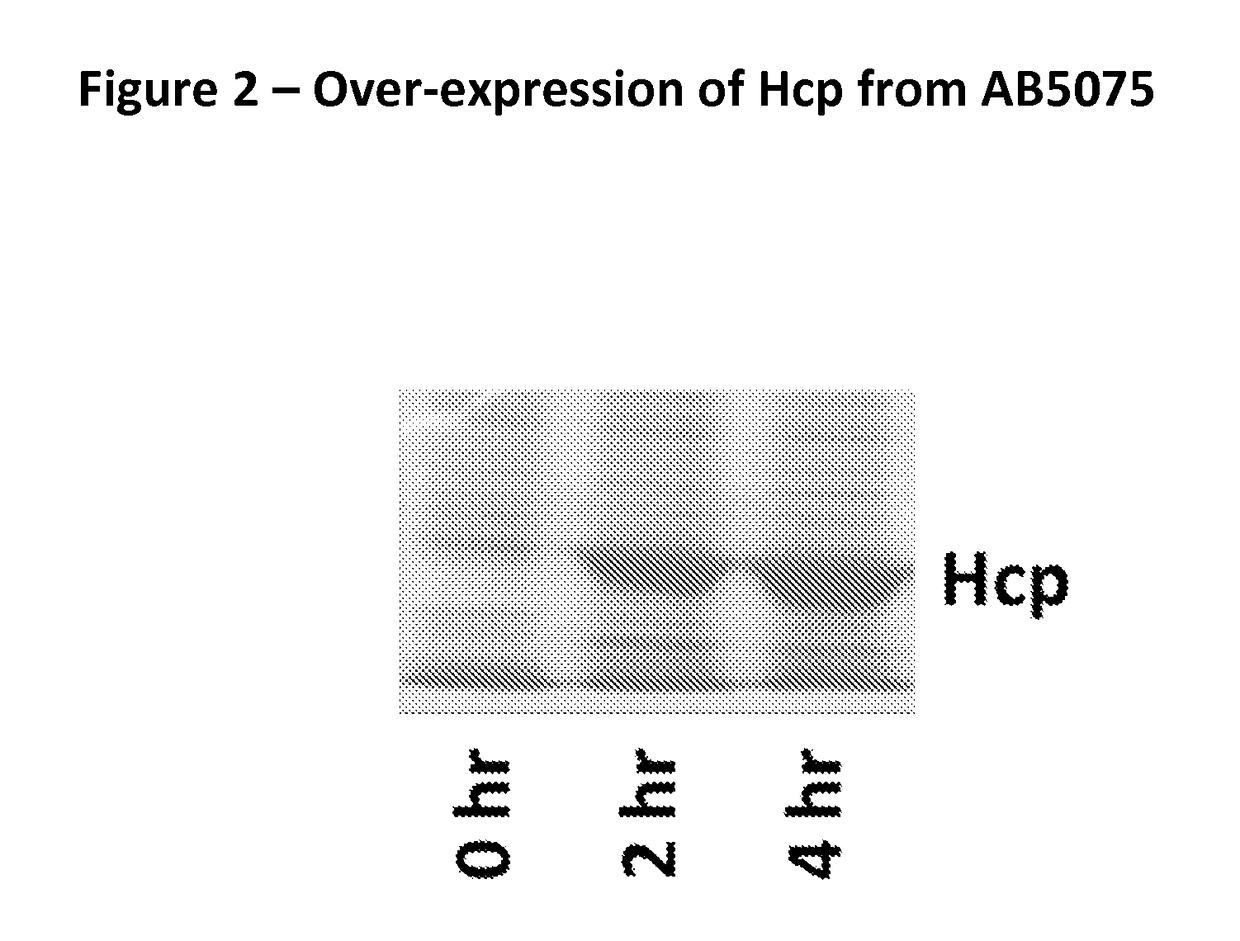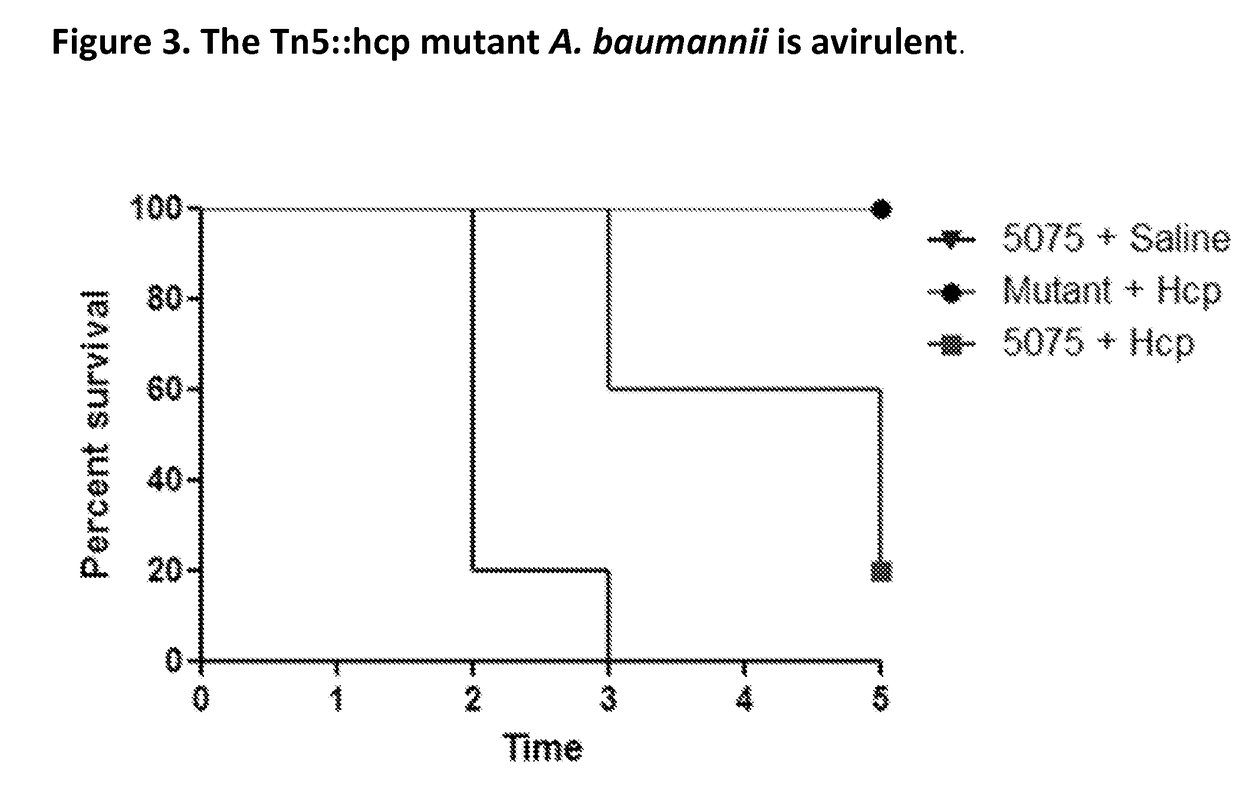Monoclonal antibodies for treatment of microbial infections
a technology for microbial infections and monoclonal antibodies, applied in the field of monoclonal antibodies for treatment of microbial infections, can solve the problems of bacterial species remaining a serious challenge, >50% mortality rate, mortality in neonates, pregnant mothers, etc., and achieve the effect of reducing or eliminating hcp expression or function, and 100% attenuation
- Summary
- Abstract
- Description
- Claims
- Application Information
AI Technical Summary
Benefits of technology
Problems solved by technology
Method used
Image
Examples
example 1
Model Strain
[0143]While previous studies attempted to examine the virulence of different clinical A. baumannii strains utilizing in vivo model systems (de Breij et al., 2012, PloS One 7, e30673; Eveillard et al., 2010, J. Infect. 60, 154-161), the majority of A. baumannii researchers still use two American Type Culture Collection (ATCC) strains, ATCC 19606T and ATCC 17978, which were isolated more than fifty years ago and are not significantly antibiotic resistant. These strains are certainly more amenable to genetic manipulation than most clinical isolates (Smith et al., 2007, Genes Dev. 21, 601-614; Tomaras et al., 2003, Microbiology 149, 3473-3484), share considerable genome homology (>90%) compared to current A. baumannii isolates (Sahl et al., 2011, BMC Genomics 12, 291), but they are not representative of contemporary isolates of this rapidly-evolving pathogen. Some researchers, recognizing that the ATCC isolates were dated, have performed studies with more recent clinical iso...
example 2
Transposon Library Generation
[0155]As a resource for genetic analysis of AB5075, a Tn5 insertion library utilizing a tetracycline-based transposon system was generated (Gallagher et al., 2015, supra). We created an arrayed library of mutants with defined transposon insertions in most nonessential genes of the organism. Our goal was to create a colony-purified library with relatively complete genome coverage that was small enough to facilitate efficient phenotype screening. We also wanted it to include several different mutations for each gene to minimize missed genotype-phenotype associations arising from non-inactivating mutations or library cross-contamination, and to provide immediate confirmation of associations observed. To meet these objectives, we created a library made up of two to three different insertion mutants per non-essential gene. The library was created in two stages. First a large primary collection of mutants generated by random insertion mutagenesis and selection...
example 3
Wound Model
[0174]In order to test the efficacy of a monoclonal antibody as a therapeutic antimicrobial, we sought to develop a wound infection model that utilized A. baumannii as a sole infectious agent and that included multiple measurable outcomes with effects that entailed quantitative end-points, which permitted small sample sizes for antimicrobial evaluation. In order to develop a new model of A. baumannii wound infection, three important selections were made from the outset of the study. First, female BALB / c mice were chosen, because immune responses in BALB / c mice are skewed more toward a Th2 than a Th1 response (Prabhakara et al., 2011, Infect. Immun. 79, 5010-5018; Gabaglia et al., 1999, J. Immunol. 162, 753-760), and this immune response favors the establishment of infection by the Gram-negative ESKAPE pathogens. Second, a cutaneous wound model was selected based on findings of a previous study, where an open wound did not adversely affect animal health during a >15-day pr...
PUM
| Property | Measurement | Unit |
|---|---|---|
| time | aaaaa | aaaaa |
| body weight | aaaaa | aaaaa |
| body weight | aaaaa | aaaaa |
Abstract
Description
Claims
Application Information
 Login to View More
Login to View More - R&D
- Intellectual Property
- Life Sciences
- Materials
- Tech Scout
- Unparalleled Data Quality
- Higher Quality Content
- 60% Fewer Hallucinations
Browse by: Latest US Patents, China's latest patents, Technical Efficacy Thesaurus, Application Domain, Technology Topic, Popular Technical Reports.
© 2025 PatSnap. All rights reserved.Legal|Privacy policy|Modern Slavery Act Transparency Statement|Sitemap|About US| Contact US: help@patsnap.com



